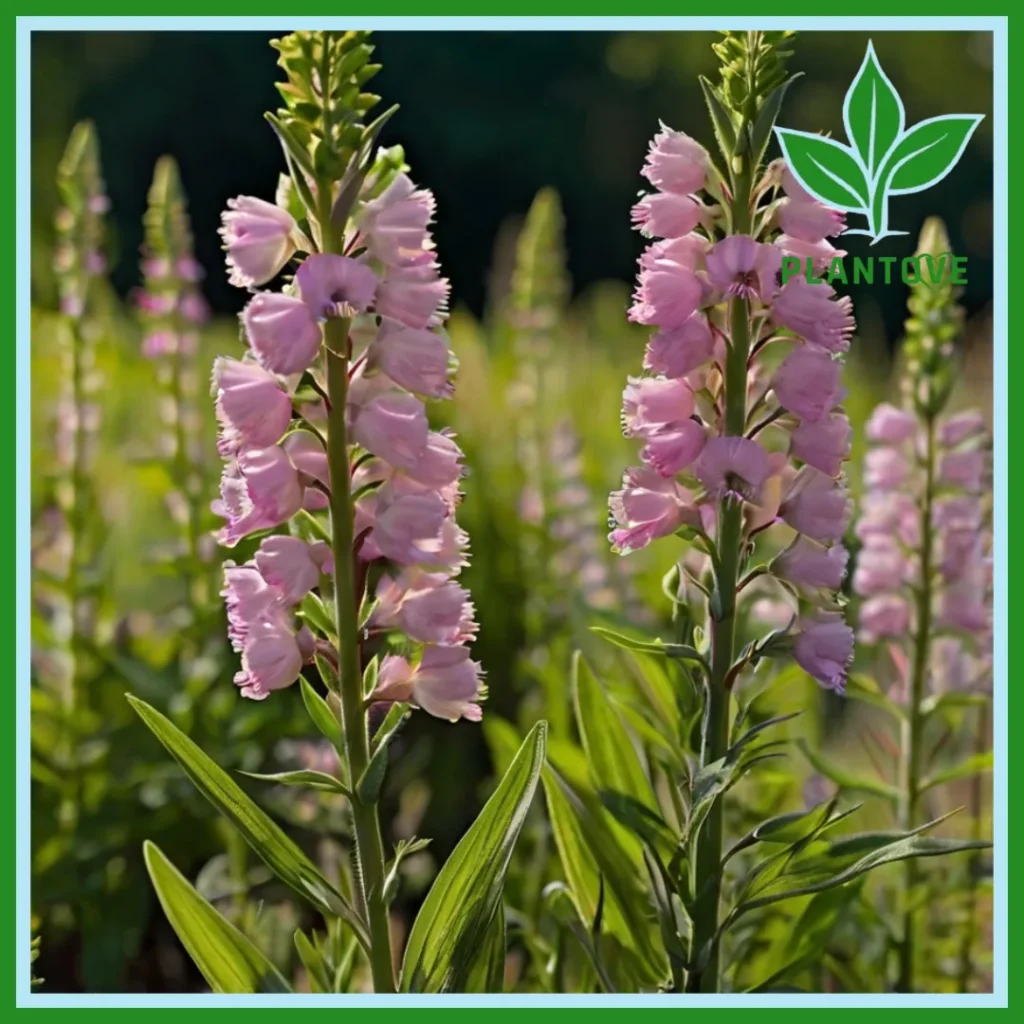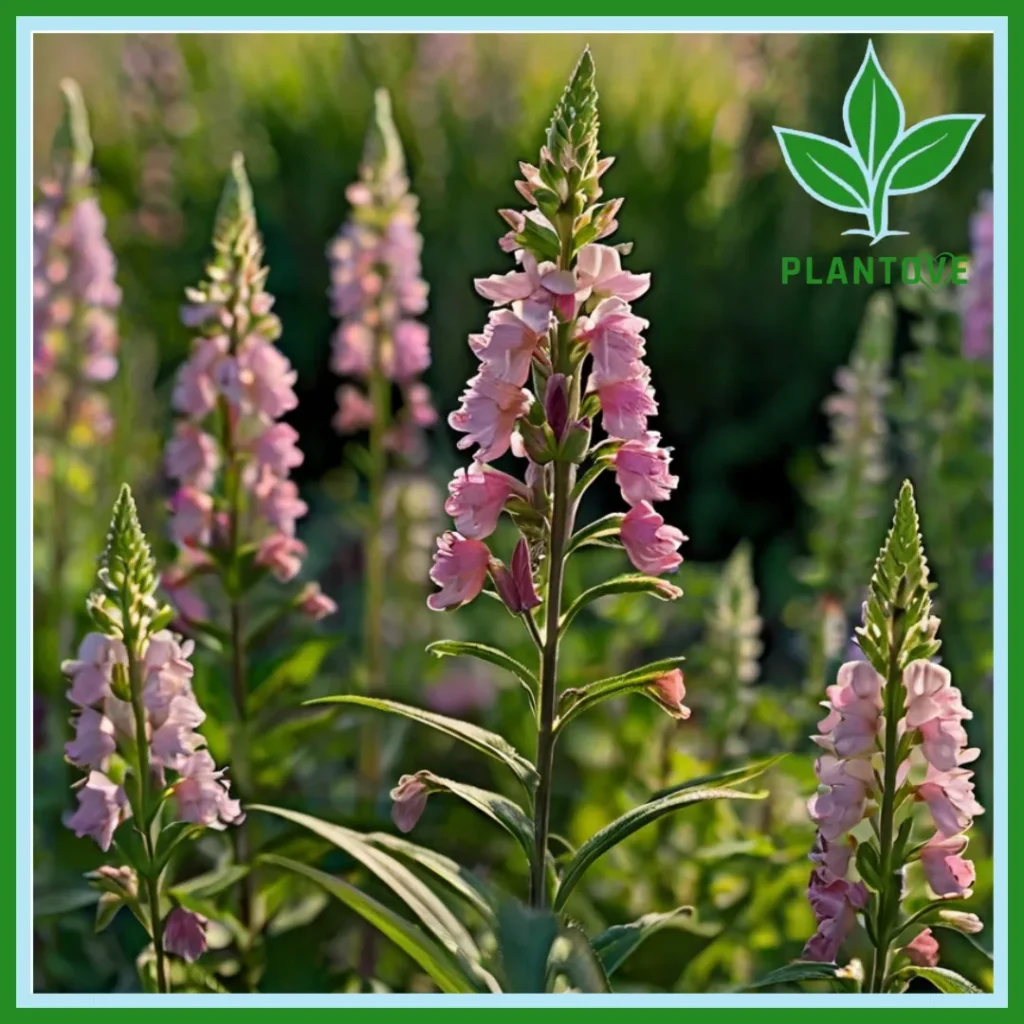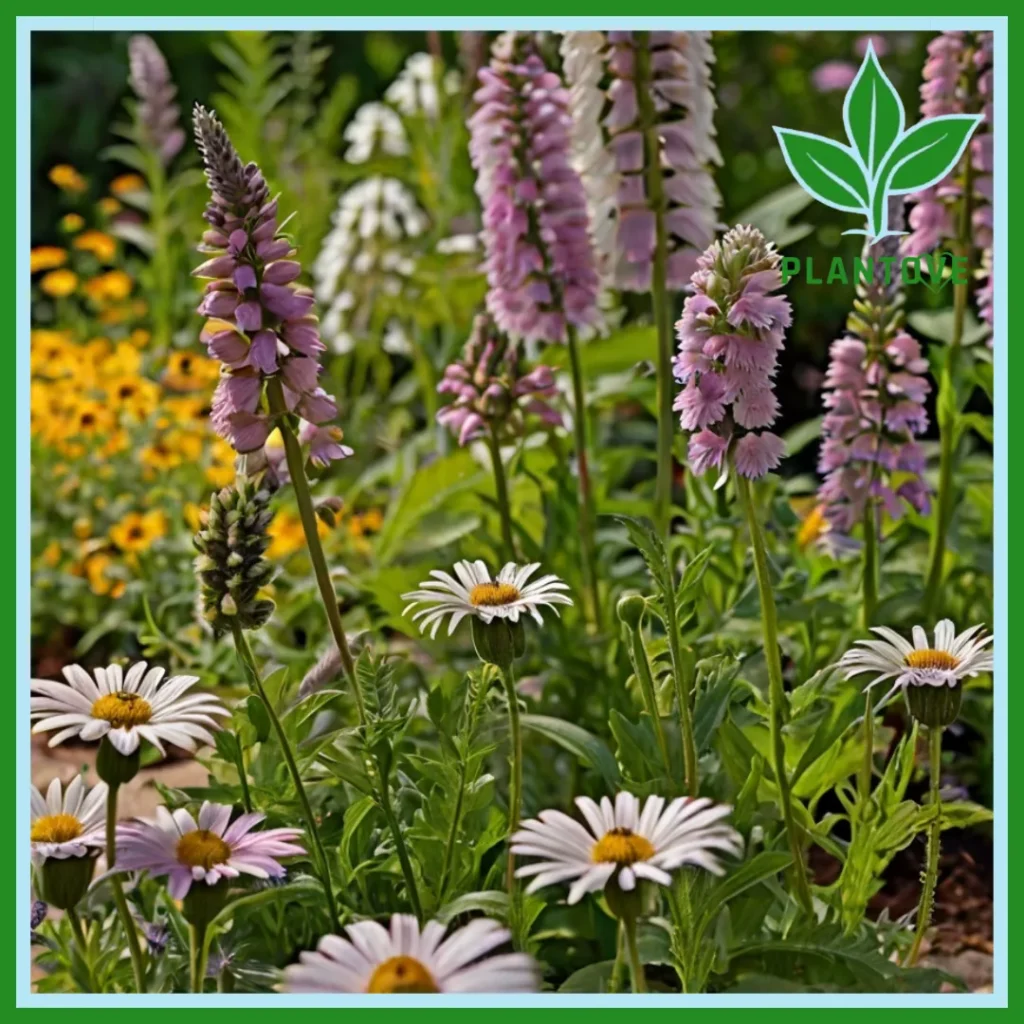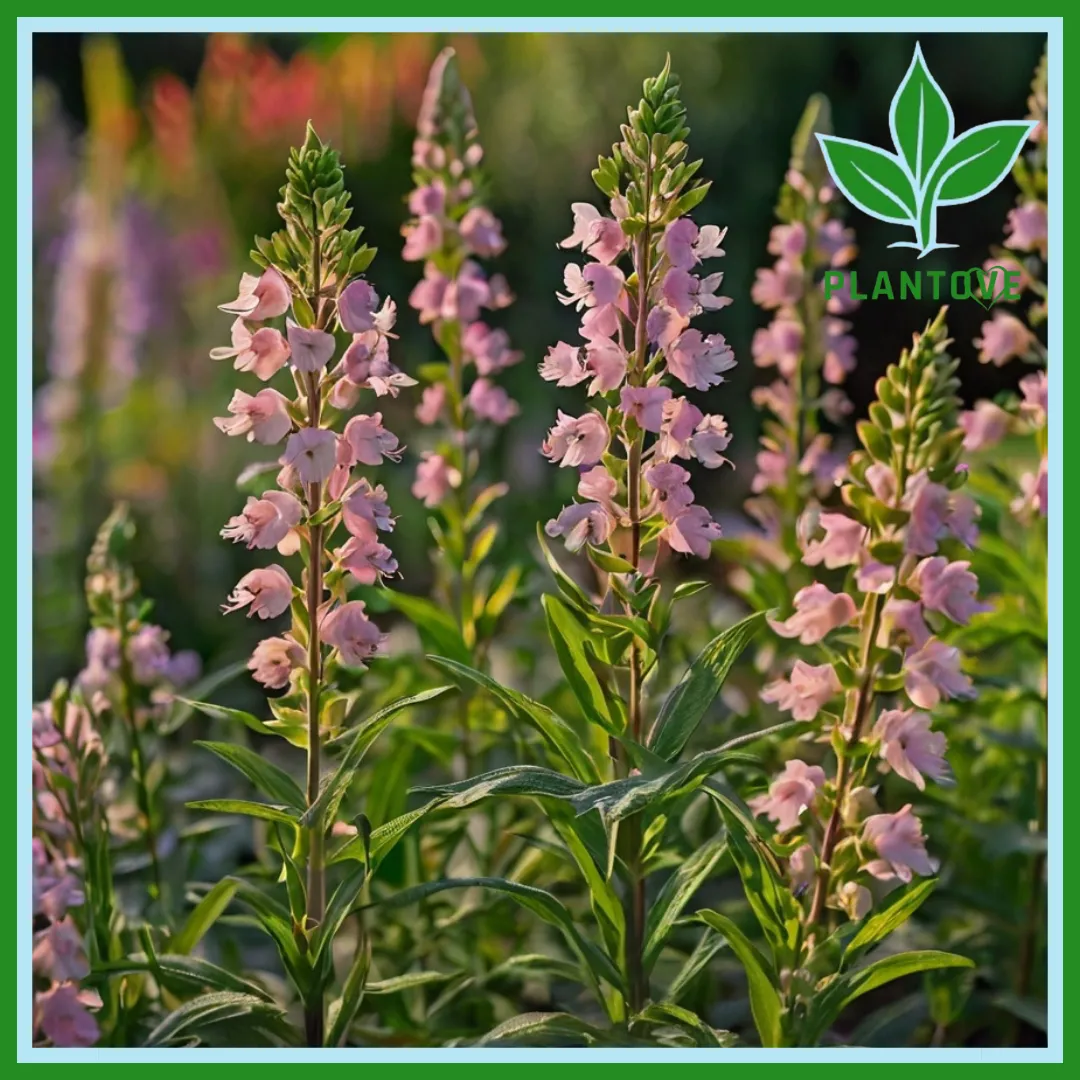The obedient plant (Physostegia virginiana) is a perennial flowering plant that offers a unique charm to gardens. Its name comes from its unusual ability to have its flowers moved or “obediently” bent in different directions, staying in place after being moved. Native to North America, the obedient plant is a popular choice for gardeners looking for a vibrant and easy-to-grow plant with a long bloom time. In this comprehensive guide, we’ll explore the uses, care, bloom time, and companion plants for the obedient plant.
What Is the Obedient Plant?
The obedient plant, also known as the false dragonhead, is a member of the mint family (Lamiaceae). It is named for its flowers’ flexibility; you can bend them in various directions, and they will remain in the position you set them in. This unique trait adds to its visual appeal, but it is its tubular, lavender, pink, or white flowers that make it stand out in gardens.
The obedient plant can grow to heights of 3 to 4 feet and spreads out over time through its rhizomatous root system. While it can become invasive in some environments, proper care and placement can prevent it from overtaking other plants in the garden.
Obedient Plant Uses: A Versatile Addition to Your Garden

One of the many reasons gardeners love the obedient plant is its versatility in landscaping. The plant is not only aesthetically pleasing but also functional in many garden settings. Let’s explore the key obedient plant uses.
1. Pollinator Attraction
The obedient plant is a magnet for pollinators. Its bright and nectar-rich flowers attract bees, butterflies, and hummingbirds, making it an excellent choice for pollinator-friendly gardens. Adding it to your landscape can help support local wildlife and encourage a thriving ecosystem in your garden.
2. Natural Borders and Focal Points
With its tall spikes and colorful blooms, the obedient plant works well as a natural border plant. It can create eye-catching divisions between garden areas or along pathways. The plant’s height also makes it a great option for use as a focal point in a flower bed or garden.
3. Cut Flowers
The obedient plant also makes for excellent cut flowers. Because the blooms remain in place when positioned, they are perfect for creating long-lasting floral arrangements. Whether indoors or outdoors, the obedient plant adds a touch of elegance to any bouquet.
Obedient Plant Care: Growing and Maintaining a Healthy Plant

While the obedient plant is generally easy to grow, understanding its basic care requirements will help ensure it thrives in your garden. Like many perennials, this plant can live for years with proper care, providing vibrant blooms season after season.
1. Sunlight Requirements
The obedient plant prefers full sun to partial shade, though it will bloom more profusely in areas where it receives at least 6 hours of direct sunlight each day. In hotter climates, providing partial shade during the hottest part of the day can help protect the plant from heat stress. However, too much shade can lead to fewer blooms and leggier growth.
2. Soil Conditions
The obedient plant is adaptable to various soil types, but it thrives in moist, well-draining soil. It can tolerate clay or sandy soil, but for the best results, enrich the soil with organic matter such as compost or peat moss. Adding organic material improves soil drainage and provides the nutrients needed for healthy growth.
3. Watering
This plant thrives in consistently moist soil, especially during its growing season. Water the plant regularly to keep the soil damp but not waterlogged. While the obedient plant can tolerate short periods of drought, extended dry spells can lead to wilting and fewer blooms.
4. Pruning and Maintenance
To keep your obedient plant looking tidy and encourage continuous blooms, deadhead the spent flowers throughout the growing season. This will redirect the plant’s energy into producing new flowers rather than seed production. In the fall, you can cut the plant back to ground level to prepare it for the winter season.
Since the plant can spread aggressively through its rhizomes, consider dividing the clumps every few years. This will not only control its spread but also rejuvenate the plant, encouraging new, vigorous growth.
Obedient Plant Bloom Time: When and How Long Does It Bloom?
The obedient plant bloom time typically falls between mid-summer and early fall, usually lasting from July through September, depending on the region and growing conditions. Its long blooming season is one of the key reasons it is so popular among gardeners.
During its bloom period, the obedient plant produces tall spikes of tubular flowers that open from the bottom of the spike upwards. Each flower spike can last several weeks, providing a continuous display of color in the garden.
Obedient Plant Propagation: How to Grow More of This Unique Flower
If you’re interested in expanding your collection or sharing this beautiful plant with others, the obedient plant can be propagated easily by division or from seed.
1. Propagation by Division
The most common method of obedient plant propagation is by dividing the plant’s rhizomes. This method not only helps control the spread of the plant but also encourages new growth.
- In early spring or fall, dig up the entire plant, making sure to get as much of the root system as possible.
- Carefully separate the rhizomes into smaller clumps, each with its own roots and shoots.
- Replant the divisions in well-drained soil, spacing them at least 1 to 2 feet apart to give them room to spread.
2. Propagation by Seeds
If you prefer to grow the obedient plant from seed, you can collect the seeds from the dried flower heads in the fall or purchase seeds from a garden center.
- Sow the seeds directly in the garden in late fall or early spring.
- Cover the seeds lightly with soil and water regularly to keep the soil moist.
- Once the seedlings are established, thin them out to ensure proper spacing for healthy growth.
Obedient Plant Companions: Ideal Pairings for a Beautiful Garden

When planning your garden, consider choosing the right obedient plant companions to enhance its beauty and overall health. Since the obedient plant can spread vigorously, pairing it with other robust perennials is ideal.
1. Coneflowers (Echinacea)
Coneflowers make excellent companions for the obedient plant. Their vibrant, daisy-like flowers add contrasting shapes and colors to the garden, while both plants thrive in similar sunlight and soil conditions.
2. Black-eyed Susan (Rudbeckia hirta)
The obedient plant pairs well with black-eyed Susans, another low-maintenance perennial with long-lasting blooms. Their golden yellow flowers complement the purple and pink hues of the obedient plant’s blooms, creating a striking visual display.
3. Bee Balm (Monarda)
Bee balm is another excellent companion plant that shares the obedient plant’s love of moist, well-draining soil. Its red, pink, or purple flowers attract pollinators, making it a great choice for enhancing the wildlife-friendly aspect of your garden.
Controlling the Spread of the Obedient Plant
While the obedient plant is admired for its beauty and hardiness, it has a tendency to spread aggressively if left unchecked. Its underground rhizomes can quickly take over garden beds, making it necessary to manage its growth.
Here are a few tips to keep the obedient plant from spreading uncontrollably:
- Use a root barrier: Installing a root barrier around the planting area can help prevent the rhizomes from spreading beyond their designated space.
- Frequent division: Dividing the plant every 2 to 3 years will not only rejuvenate it but also keep it from becoming too invasive.
- Consider container planting: If you’re concerned about the plant’s aggressive spread, growing it in a container can help control its growth while still enjoying its beauty.
Conclusion: Why the Obedient Plant Is a Must-Have for Gardeners
The obedient plant is a delightful addition to any garden, offering a unique blend of beauty, versatility, and ease of care. Its long bloom time, pollinator-attracting qualities, and flexible flowers make it an interesting and functional plant to grow. By understanding the proper obedient plant care techniques and considering the best obedient plant companions, you can enjoy a vibrant, thriving garden with this stunning perennial.
Whether you’re using it as a border plant, focal point, or pollinator attractor, the obedient plant is a standout choice for gardeners of all skill levels. With its low-maintenance nature and beautiful blooms, it’s a plant that rewards your garden year after year.

